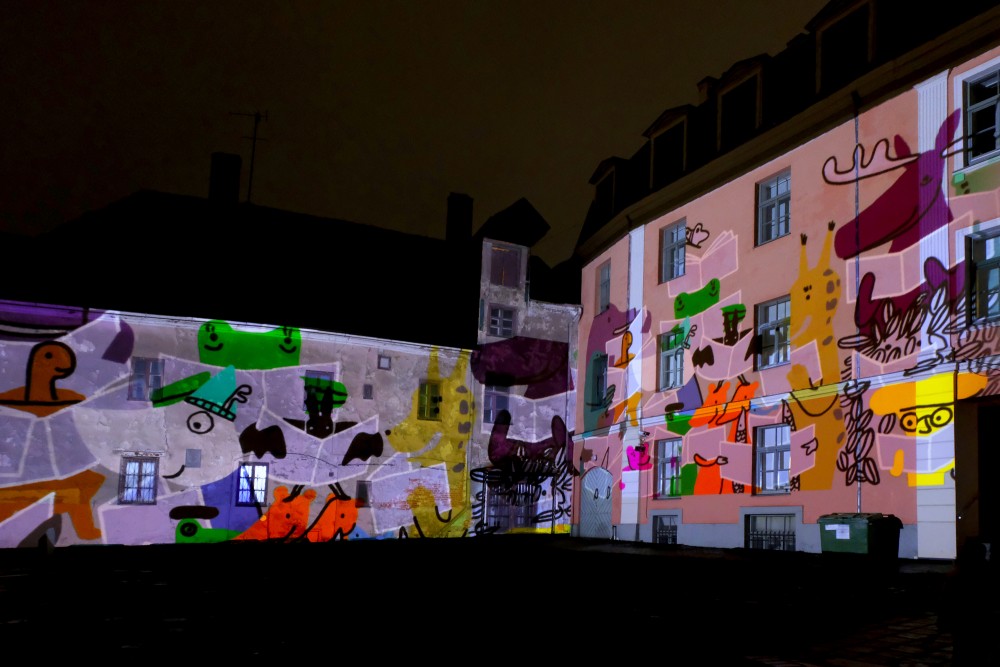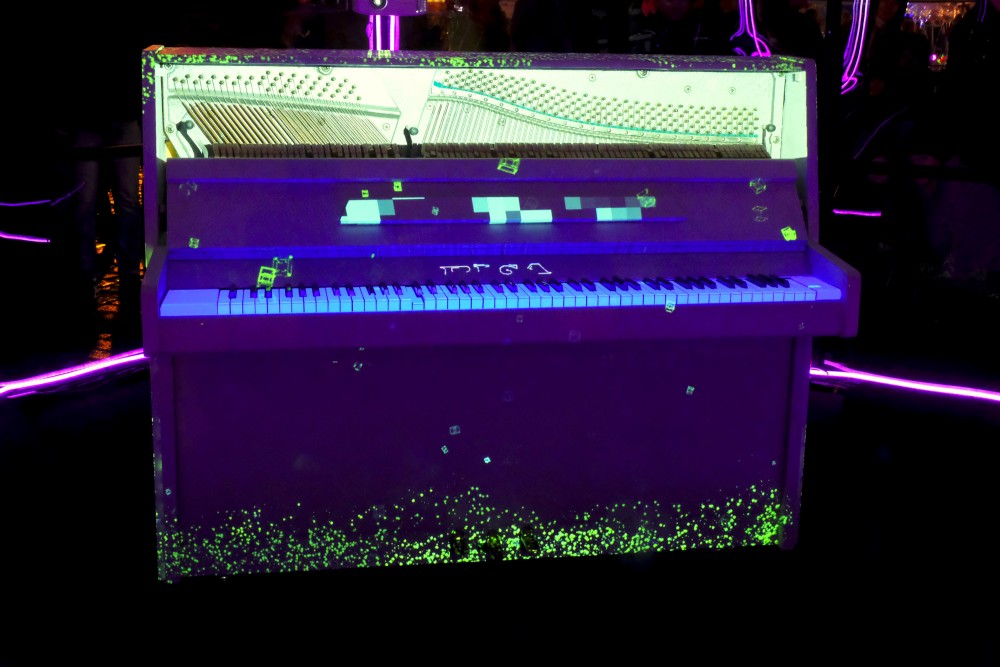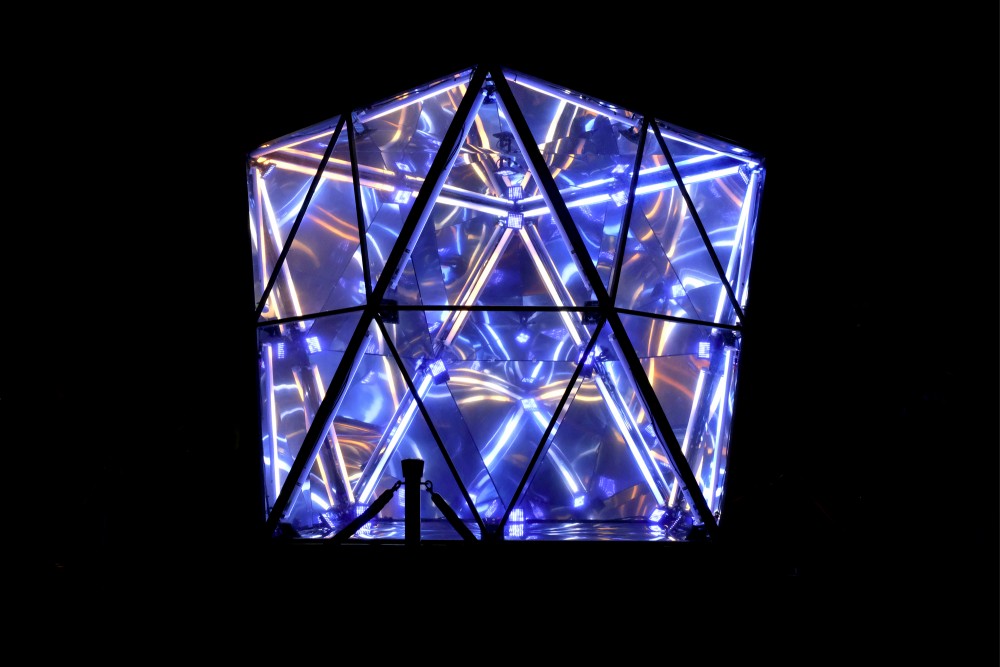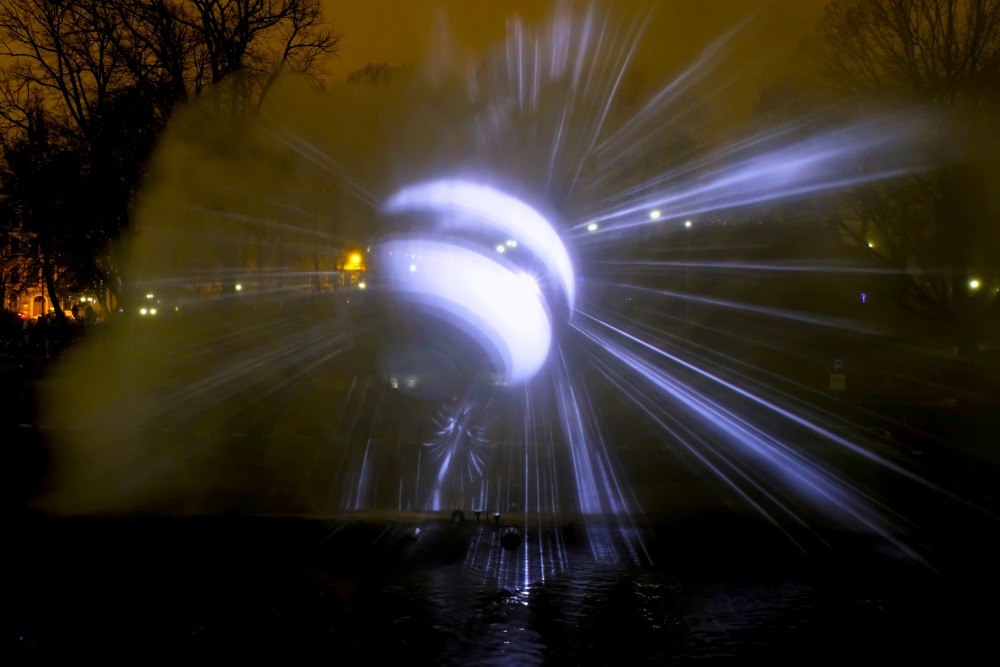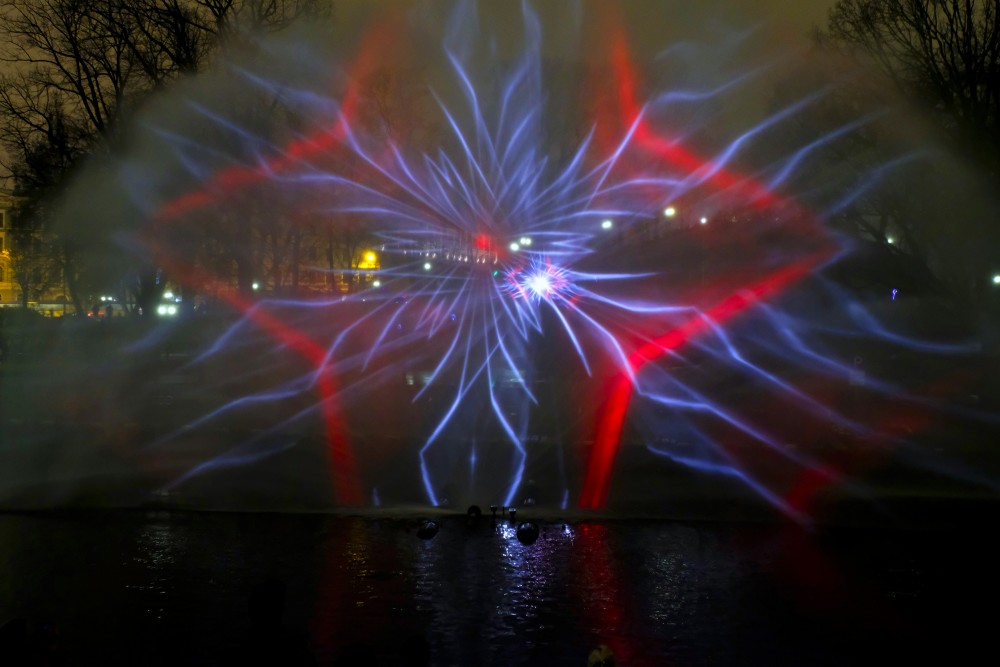Latvia: history
Latvia (/ˈlɑːtviə/ or /ˈlætviə); Latvian: Latvija [ˈlatvija], Livonian: Leţmō), officially the Republic of Latvia (Latvian: Latvijas Republika, Livonian: Leţmō Vabāmō), is a country in the Baltic region of Northern Europe. Since its independence, Latvia has been referred to as one of the Baltic states. It is bordered by Estonia to the north, Lithuania to the south, Russia to the east, and Belarus to the southeast, and shares a maritime border with Sweden to the west. Latvia has 1,957,200 inhabitants and a territory of 64,589 km2(24,938 sq mi). he country has a temperate seasonal climate.
After centuries of Swedish, Polish and Russian rule, a rule mainly executed by the Baltic German aristocracy, the Republic of Latvia was established on 18 November 1918 when it broke away and declared independence in the aftermath of World War I. However, by the 1930s the country became increasingly autocratic after the coup in 1934 establishing an authoritarian regime under Kārlis Ulmanis. The country's de facto independence was interrupted at the outset of World War II, beginning with Latvia's forcible incorporation into the Soviet Union, followed by the invasion and occupation by Nazi Germany in 1941, and the re-occupation by the Soviets in 1944 (Courland Pocket in 1945) to form the Latvian SSR for the next 45 years.
The peaceful Singing Revolution, starting in 1987, called for Baltic emancipation from Soviet rule and condemning the Communistregime's illegal takeover. It ended with the Declaration on the Restoration of Independence of the Republic of Latvia on 4 May 1990, and restoring de facto independence on 21 August 1991. Latvia is a democratic sovereign state, parliamentary republic and a very highly developed country according to the United Nations Human Development Index. Its capital Riga served as the European Capital of Culture in 2014. Latvian is the official language. Latvia is a unitary state, divided into 119 administrative divisions, of which 110 are municipalities and nine are cities. Latvians and Livonians are the indigenous people of Latvia. Latvian and Lithuanian are the only two surviving Baltic languages.
Despite foreign rule from the 13th to 20th centuries, the Latvian nation maintained its identity throughout the generations via the language and musical traditions. However, as a consequence of centuries of Russian rule (1710–1918) and later Soviet occupation, Latvia is home to a large number of ethnic Russians (26.9% in Latvia), some of whom (14.1% of Latvian residents) have not gained citizenship, leaving them with no citizenship at all. Until World War II, Latvia also had significant minorities of ethnic Germans and Jews. Latvia is historically predominantly Lutheran Protestant, except for the Latgale region in the southeast, which has historically been predominantly Roman Catholic. The Russian population are largely Eastern Orthodox Christians.
Latvia is a member of the European Union, Eurozone, NATO, the Council of Europe, the United Nations, CBSS, the IMF, NB8, NIB, OECD, OSCE, and WTO. For 2014, the country was listed 46th on the Human Development Index and as a high income country on 1 July 2014. A full member of the Eurozone, it began using the euro as its currency on 1 January 2014, replacing the Latvian lats.
Etymology
The name Latvija is derived from the name of the ancient Latgalians, one of four Indo-European Baltic tribes (along with Couronians, Selonians and Semigallians), which formed the ethnic core of modern Latvians together with the Finnic Livonians. Henry of Latviacoined the latinisations of the country's name, "Lettigallia" and "Lethia", both derived from the Latgalians. The terms inspired the variations on the country's name in Romance languages from "Letonia" and in several Germanic languages from "Lettland".
History
Around 3000 BC, the proto-Baltic ancestors of the Latvian people settled on the eastern coast of the Baltic Sea. The Baltsestablished trade routes to Rome and Byzantium, trading local amber for precious metals. By 900 AD, four distinct Baltic tribes inhabited Latvia: Curonians, Latgalians, Selonians, Semigallians (in Latvian: kurši, latgaļi, sēļi and zemgaļi), as well as the Finnic tribe of Livonians (lībieši) speaking a Finnic language.
In the 12th century in the territory of Latvia, there were 14 lands with their rulers: Vanema, Ventava, Bandava, Piemare, Duvzare, Ceklis, Megava, Pilsāts, Upmale, Sēlija, Koknese, Jersika, Tālava and Adzele.
Medieval period
Although the local people had contact with the outside world for centuries, they became more fully integrated into the European socio-political system in the 12th century. The first missionaries, sent by the Pope, sailed up the Daugava River in the late 12th century, seeking converts. The local people, however, did not convert to Christianity as readily as the Church had hoped. German crusaders were sent, or more likely decided to go on their own accord as they were known to do. Saint Meinhard of Segeberg arrived in Ikšķile, in 1184, traveling with merchants to Livonia, on a Catholic mission to convert the population from their original pagan beliefs. Pope Celestine III had called for a crusade against pagans in Northern Europe in 1193. When peaceful means of conversion failed to produce results, Meinhard plotted to convert Livonians by force of arms.
In the beginning of the 13th century, Germans ruled large parts of today's Latvia. Together with Southern Estonia, these conquered areas formed the crusader state that became known as Terra Mariana or Livonia. In 1282, Riga, and later the cities of Cēsis, Limbaži, Koknese and Valmiera, became part of the Hanseatic League. Riga became an important point of east-west trading and formed close cultural links with Western Europe.
Reformation period and Polish–Lithuanian rule
After the Livonian War (1558–1583), Livonia (Latvia) fell under Polish and Lithuanian rule. The southern part of Estonia and the northern part of Latvia were ceded to the Grand Duchy of Lithuania and formed into the Duchy of Livonia (Ducatus Livoniae Ultradunensis). Gotthard Kettler, the last Master of the Order of Livonia, formed the Duchy of Courland and Semigallia. Though the duchy was a vassal state to Poland, it retained a considerable degree of autonomy and experienced a golden age in the 16th century. Latgalia, the easternmost region of Latvia, became a part of the Inflanty Voivodeship of the Polish-Lithuanian Commonwealth.
In the 17th and early 18th centuries, the Polish–Lithuanian Commonwealth, Sweden, and Russia struggled for supremacy in the eastern Baltic. After the Polish–Swedish War, northern Livonia (including Vidzeme) came under Swedish rule. Riga became the capital of Swedish Livonia and the largest city in the entire Swedish Empire. Fighting continued sporadically between Sweden and Poland until the Truce of Altmark in 1629. In Latvia, the Swedish period is generally remembered as positive; serfdom was eased, a network of schools was established for the peasantry, and the power of the regional barons was diminished.
Several important cultural changes occurred during this time. Under Swedish and largely German rule, western Latvia adopted Lutheranismas its main religion. The ancient tribes of the Couronians, Semigallians, Selonians, Livs, and northern Latgallians assimilated to form the Latvian people, speaking one Latvian language. Throughout all the centuries, however, an actual Latvian state had not been established, so the borders and definitions of who exactly fell within that group are largely subjective. Meanwhile, largely isolated from the rest of Latvia, southern Latgallians adopted Catholicism under Polish/Jesuit influence. The native dialect remained distinct, although it acquired many Polish and Russian loanwords.
Latvia in the Russian Empire (1795–1917)
The capitulation of Estonia and Livonia in 1710 and the Treaty of Nystad, ending the Great Northern War in 1721, gave Vidzeme to Russia (it became part of the Riga Governorate). The Latgale region remained part of the Polish–Lithuanian Commonwealth as Inflanty Voivodeship until 1772, when it was incorporated into Russia. The Duchy of Courland and Semigallia became an autonomous Russian province (the Courland Governorate) in 1795, bringing all of what is now Latvia into the Russian Empire. All three Baltic provinces preserved local laws, German as the local official language and their own parliament, the Landtag.
During the Great Northern War (1700–1721), up to 40 percent of Latvians died from famine and plague. Half the residents of Riga were killed by plague in 1710–1711.
The emancipation of the serfs took place in Courland in 1817 and in Vidzeme in 1819. In practice, however, the emancipation was actually advantageous to the landowners and nobility, as it dispossessed peasants of their land without compensation, forcing them to return to work at the estates "of their own free will".
During the 19th century, the social structure changed dramatically. A class of independent farmers established itself after reforms allowed the peasants to repurchase their land, but many landless peasants remained. There also developed a growing urban proletariat and an increasingly influential Latvian bourgeoisie. The Young Latvian (Latvian: Jaunlatvieši) movement laid the groundwork for nationalism from the middle of the century, many of its leaders looking to the Slavophiles for support against the prevailing German-dominated social order. The rise in use of the Latvian language in literature and society became known as the First National Awakening. Russification began in Latgale after the Polish led the January Uprising in 1863: this spread to the rest of what is now Latvia by the 1880s. The Young Latvians were largely eclipsed by the New Current, a broad leftist social and political movement, in the 1890s. Popular discontent exploded in the 1905 Russian Revolution, which took a nationalist character in the Baltic provinces.
During these two centuries Latvia experienced economic and construction boom – ports were expanded (Riga became the largest port in the Russian Empire), railways built; new factories, banks, and a University were established; many residential, public (theatres and museums), and school buildings were erected; new parks formed; and so on. Riga's boulevards and some streets outside the Old Town date from this period.
Worth mentioning is the fact that numeracy was also higher in the Estonian and Latvian parts of the Russian Empire, which may have been influenced by the Protestant religion of the inhabitants.
Declaration of independence
World War I devastated the territory of what became the state of Latvia, and other western parts of the Russian Empire. Demands for self-determination were initially confined to autonomy, until a power vacuum was created by the Russian Revolution in 1917, followed by the Treaty of Brest-Litovsk between Russia and Germany in March 1918, then the Allied armistice with Germany on 11 November 1918. On 18 November 1918, in Riga, the People's Council of Latvia proclaimed the independence of the new country, with Kārlis Ulmanis becoming the head of the provisional government. The General representative of Germany August Winnig formally handed over political power to the Latvian Provisional Government on 26 November.
The war of independence that followed was part of a general chaotic period of civil and new border wars in Eastern Europe. By the spring of 1919, there were actually three governments: the Provisional government headed by Kārlis Ulmanis, supported by Tautas padome and the Inter-Allied Commission of Control; the Latvian Soviet government led by Pēteris Stučka, supported by the Red Army; and the Provisional government headed by Andrievs Niedra and supported by the Baltische Landeswehr and the German Freikorps unit Iron Division.
Estonian and Latvian forces defeated the Germans at the Battle of Wenden in June 1919, and a massive attack by a predominantly German force—the West Russian Volunteer Army—under Pavel Bermondt-Avalov was repelled in November. Eastern Latvia was cleared of Red Army forces by Latvian and Polish troops in early 1920 (from the Polish perspective the Battle of Daugavpils was a part of the Polish–Soviet War).
A freely elected Constituent assembly convened on 1 May 1920, and adopted a liberal constitution, the Satversme, in February 1922. The constitution was partly suspended by Kārlis Ulmanis after his coup in 1934 but reaffirmed in 1990. Since then, it has been amended and is still in effect in Latvia today. With most of Latvia's industrial base evacuated to the interior of Russia in 1915, radical land reform was the central political question for the young state. In 1897, 61.2% of the rural population had been landless; by 1936, that percentage had been reduced to 18%.
By 1923, the extent of cultivated land surpassed the pre-war level. Innovation and rising productivity led to rapid growth of the economy, but it soon suffered from the effects of the Great Depression. Latvia showed signs of economic recovery, and the electorate had steadily moved toward the centre during the parliamentary period. On 15 May 1934, Ulmanis staged a bloodless coup, establishing a nationalist dictatorship that lasted until 1940. After 1934, Ulmanis established government corporations to buy up private firms with the aim of "Latvianising" the economy.
Latvia in World War II
Early in the morning of 24 August 1939, the Soviet Union and Nazi Germany signed a 10-year non-aggression pact, called the Molotov–Ribbentrop Pact. The pact contained a secret protocol, revealed only after Germany's defeat in 1945, according to which the states of Northern and Eastern Europe were divided into German and Soviet "spheres of influence". In the north, Latvia, Finland and Estonia were assigned to the Soviet sphere. A week later, on 1 September 1939, Germany and on 17 September, the Soviet Union invaded Poland.
After the conclusion of the Molotov-Ribbentrop Pact, most of the Baltic Germans left Latvia by agreement between Ulmanis' government and Nazi Germany under the Heim ins Reich programme. In total 50,000 Baltic Germans left by the deadline of December 1939, with 1,600 remaining to conclude business and 13,000 choosing to remain in Latvia. Most of those who remained left for Germany in summer 1940, when a second resettlement scheme was agreed. The racially approved being resettled mainly in Poland, being given land and businesses in exchange for the money they had received from the sale of their previous assets.
On 5 October 1939, Latvia was forced to accept a "mutual assistance" pact with the Soviet Union, granting the Soviets the right to station between 25,000 and 30,000 troops on Latvian territory. State administrators were liquidated and replaced by Soviet cadres. Elections were held with single pro-Soviet candidates listed for many positions. The resulting people's assembly immediately requested admission into the USSR, which the Soviet Union granted. Latvia, then a puppet government, was headed by Augusts Kirhenšteins. The Soviet Union incorporated Latvia on 5 August 1940, as The Latvian Soviet Socialist Republic.
The Soviets dealt harshly with their opponents – prior to Operation Barbarossa, in less than a year, at least 34,250 Latvians were deported or killed. Most were deported to Siberia where deaths were estimated at 40 percent, officers of the Latvian army being shot on the spot.
On 22 June 1941 German troops attacked Soviet forces in Operation Barbarossa. There were some spontaneous uprisings by Latvians against the Red Army which helped the Germans. By 29 June Riga was reached and with Soviet troops killed, captured or retreating, Latvia was left under the control of German forces by early July. The occupation was followed immediately by SS Einsatzgruppen troops who were to act in accordance with the Nazi Generalplan Ost which required the population of Latvia to be cut by 50 percent.
Under German occupation, Latvia was administered as part of Reichskommissariat Ostland. Latvian paramilitary and Auxiliary Police units established by the occupation authority participated in the Holocaust and other atrocities. 30,000 Jews were shot in Latvia in the autumn of 1941. Another 30,000 Jews from the Riga ghetto were killed in the Rumbula Forest in November and December 1941, to reduce overpopulation in the ghetto and make room for more Jews being brought in from Germany and the West. There was a pause in fighting, apart from partisan activity, until after the siege of Leningrad ended in January 1944 and the Soviet troops advanced, entering Latvia in July and eventually capturing Riga on 13 October 1944.
More than 200,000 Latvian citizens died during World War II, including approximately 75,000 Latvian Jews murdered during the Nazi occupation. Latvian soldiers fought on both sides of the conflict, mainly on the German side, with 140,000 men in the Latvian Legion of the Waffen-SS, The 308th Latvian Rifle Division was formed by the Red Army in 1944. On occasions, especially in 1944, opposing Latvian troops faced each other in battle. Activity reached a peak in late 1946.
In the 23rd block of the Vorverker cemetery, a monument was erected after the Second World War for the people of Latvia, who had died in Lübeck from 1945 to 1950.
Soviet era (1940–1941, 1944–1991)
In 1944, when Soviet military advances reached Latvia, heavy fighting took place in Latvia between German and Soviet troops, which ended in another German defeat. In the course of the war, both occupying forces conscripted Latvians into their armies, in this way increasing the loss of the nation's "live resources". In 1944, part of the Latvian territory once more came under Soviet control. The Soviets immediately began to reinstate the Soviet system. After the German surrender, it became clear that Soviet forces were there to stay, and Latvian national partisans, soon joined by some who had collaborated with the Germans, began to fight against the new occupier.
Anywhere from 120,000 to as many as 300,000 Latvians took refuge from the Soviet army by fleeing to Germany and Sweden. Most sources count 200,000 to 250,000 refugees leaving Latvia, with perhaps as many as 80,000 to 100,000 of them recaptured by the Soviets or, during few months immediately after the end of war, returned by the West. The Soviets reoccupied the country in 1944–1945, and further deportations followed as the country was collectivised and Sovieticised.
On 25 March 1949, 43,000 rural residents ("kulaks") and Latvian patriots ("nationalists") were deported to Siberia in a sweeping Operation Priboi in all three Baltic states, which was carefully planned and approved in Moscow already on 29 January 1949. This operation had the desired effect of reducing the anti Soviet partisan activity. Between 136,000 and 190,000 Latvians, depending on the sources, were imprisoned or deported to Soviet concentration camps (the Gulag) in the post war years, from 1945 to 1952. Some managed to escape arrest and joined the partisans.
In the post-war period, Latvia was made to adopt Soviet farming methods. Rural areas were forced into collectivisation. An extensive programme to impose bilingualism was initiated in Latvia, limiting the use of Latvian language in official uses in favour of using Russian as the main language. All of the minority schools (Jewish, Polish, Belarusian, Estonian, Lithuanian) were closed down leaving only two media of instructions in the schools: Latvian and Russian. An influx of labourers, administrators, military personnel and their dependants from Russia and other Soviet republics started. By 1959 about 400,000 people arrived from other Soviet republics and the ethnic Latvian population had fallen to 62%.
Since Latvia had maintained a well-developed infrastructure and educated specialists, Moscow decided to base some of the Soviet Union's most advanced manufacturing in Latvia. New industry was created in Latvia, including a major machinery factory RAF in Jelgava, electrotechnical factories in Riga, chemical factories in Daugavpils, Valmiera and Olaine—and some food and oil processing plants. Latvia manufactured trains, ships, minibuses, mopeds, telephones, radios and hi-fi systems, electrical and diesel engines, textiles, furniture, clothing, bags and luggage, shoes, musical instruments, home appliances, watches, tools and equipment, aviation and agricultural equipment, aviation and agricultural equipment and long list of other goods. Latvia had its own film industry and musical records factory (LPs). However, there were not enough people to operate the newly built factories. To maintain and expand industrial production, skilled workers were migrating from all over the Soviet Union, decreasing the proportion of ethnic Latvians in the republic.The population of Latvia reached its peak in 1990 at just under 2.7 million people.
In late 2018 the National Archives of Latvia released a full alphabetical index of some 10,000 people recruited as agents or informants by the Soviet KGB. 'The publication, which followed two decades of public debate and the passage of a special law, revealed the names, code names, birthplaces and other data on active and former KGB agents as of 1991, the year Latvia regained its independence from the Soviet Union.'
Restoration of independence in 1991
In the second half of the 1980s, Soviet leader Mikhail Gorbachev started to introduce political and economic reforms in the Soviet Union that were called glasnost and perestroika. In the summer of 1987, the first large demonstrations were held in Riga at the Freedom Monument—a symbol of independence. In the summer of 1988, a national movement, coalescing in the Popular Front of Latvia, was opposed by the Interfront. The Latvian SSR, along with the other Baltic Republics was allowed greater autonomy, and in 1988, the old pre-war Flag of Latvia flew again, replacing the Soviet Latvian flag as the official flag in 1990.
In 1989, the Supreme Soviet of the USSR adopted a resolution on the Occupation of the Baltic states, in which it declared the occupation "not in accordance with law", and not the "will of the Soviet people". Pro-independence Popular Front of Latvia candidates gained a two-thirds majority in the Supreme Council in the March 1990 democratic elections. On 4 May 1990, the Supreme Council adopted the Declaration on the Restoration of Independence of the Republic of Latvia, and the Latvian SSR was renamed Republic of Latvia.
However, the central power in Moscow continued to regard Latvia as a Soviet republic in 1990 and 1991. In January 1991, Soviet political and military forces tried unsuccessfully to overthrow the Republic of Latvia authorities by occupying the central publishing house in Riga and establishing a Committee of National Salvation to usurp governmental functions. During the transitional period, Moscow maintained many central Soviet state authorities in Latvia.
In spite of this, 73% of all Latvian residents confirmed their strong support for independence on 3 March 1991, in a nonbinding advisory referendum. The Popular Front of Latvia advocated that all permanent residents be eligible for Latvian citizenship, and that helped sway a large number of ethnic Russians to vote for independence. However, universal citizenship for all permanent residents was not adopted. Instead, citizenship was granted to persons who had been citizens of Latvia at the day of loss of independence at 1940 as well as their descendants. As a consequence, the majority of ethnic non-Latvians did not receive Latvian citizenship since neither they nor their parents had ever been citizens of Latvia, becoming non-citizens or citizens of other former Soviet republics. By 2011, more than half of non-citizens had taken naturalisation exams and received Latvian citizenship. Still, today there are 290,660 non-citizens in Latvia, which represent 14.1% of the population. They have no citizenship of any country, and cannot vote in Latvia.
The Republic of Latvia declared the end of the transitional period and restored full independence on 21 August 1991, in the aftermath of the failed Soviet coup attempt.
The Saeima, Latvia's parliament, was again elected in 1993. Russia ended its military presence by completing its troop withdrawal in 1994 and shutting down the Skrunda-1 radar station in 1998. The major goals of Latvia in the 1990s, to join NATO and the European Union, were achieved in 2004. The NATO Summit 2006 was held in Riga.
Language and citizenship laws have been opposed by many Russophones. Citizenship was not automatically extended to former Soviet citizens who settled during the Soviet occupation, or to their offspring. Children born to non-nationals after the reestablishment of independence are automatically entitled to citizenship. Approximately 72% of Latvian citizens are Latvian, while 20% are Russian; less than 1% of non-citizens are Latvian, while 71% are Russian. The government denationalised private property confiscated by the Soviets, returning it or compensating the owners for it, and privatised most state-owned industries, reintroducing the prewar currency. Albeit having experienced a difficult transition to a liberal economy and its re-orientation toward Western Europe, Latvia is one of the fastest growing economies in the European Union. In 2014, Riga was the European Capital of Culture, the euro was introduced as the currency of the country and a Latvian was named vice-president of the European Commission. In 2015 Latvia held the presidency of Council of the European Union. Big European events have been celebrated in Riga such as the Eurovision Song Contest 2003 and the European Film Awards 2014. On 1 July 2016, Latvia became a member of the OECD.
en.wikipedia.org
https://en.wikipedia.org/wiki/Latvia
Continue reading
